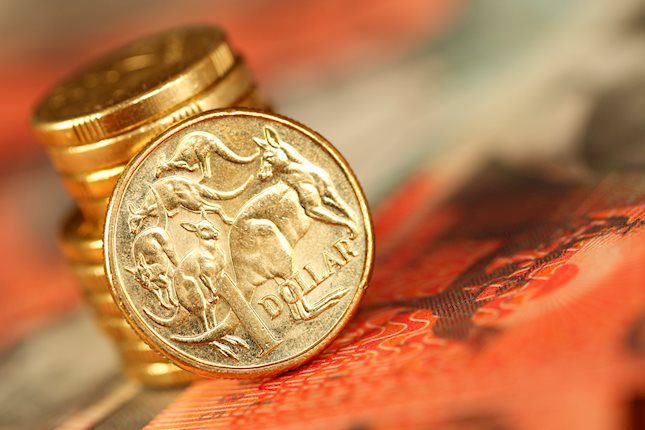- AUD/JPY remains firms on multiple tailwinds.
- The RBA left its key interest rates steady at 4.35% on Tuesday.
- Investors await Japan’s Tokyo CPI data for fresh BoJ’s interest rate outlook.
The AUD/JPY pair rises further to near 99.60 in Thursday’s European session. The cross extends its winning spell for the ninth trading day on Thursday as the Australian Dollar (AUD) performs strongly on multiple tailwinds such as: Reserve Bank of Australia’s (RBA) hawkish interest rate outlook and China’s larger-than-expected monetary stimulus.
After leaving the Official Cash Rate (OCR) unchanged at 4.35% on Tuesday, the comments from the RBA indicated that it is unlikely to start reducing interest rates this year due to sticky price pressures and upbeat labor market health.
In addition to the RBA’s hawkish guidance, the announcement of a slew of stimulus packages by China has also strengthened the AUD’s outlook. It is worth noting that the Australia is the leading trading partner of China and an attempt to revive the Chinese economy will have a positive impact on the Australian Dollar.
Meanwhile, the Japanese Yen (JPY) will be guided by the Tokyo Consumer Price Index (CPI) data for August, which will be published on Friday. The Tokyo CPI excluding Fresh Food is estimated to have grown by 2%, slower than 2.4% in July. This would dampen market expectations for the Bank of Japan (BoJ) to hike interest rates further.
AUD/JPY gathers strength to break above the horizontal resistance plotted from September 2 high of 99.87 on a daily timeframe. Given a nine-day winning spree, the risk-barometer would thrash the immediate resistance. Upward-sloping 20-day Exponential Moving Average (EMA) near 97.40 suggests that the near-term trend is bullish.
The 14-day Relative Strength Index (RSI) has climbed above 60.00. A bullish momentum would trigger if the oscillator sustains above the same.
Going forward, a decisive break above September 2 high of 99.87 will result in further upside in the asset towards the psychological resistance of 100.00 and July 30 high of 101.78.
On the flip side, a downside move below September 25 low of 98.50 would drag the asset towards the 20-day EMA, which is currently trading around 97.40, followed by September 12 high near 95.70.
AUD/JPY daily chart
Australian Dollar FAQs
One of the most significant factors for the Australian Dollar (AUD) is the level of interest rates set by the Reserve Bank of Australia (RBA). Because Australia is a resource-rich country another key driver is the price of its biggest export, Iron Ore. The health of the Chinese economy, its largest trading partner, is a factor, as well as inflation in Australia, its growth rate and Trade Balance. Market sentiment – whether investors are taking on more risky assets (risk-on) or seeking safe-havens (risk-off) – is also a factor, with risk-on positive for AUD.
The Reserve Bank of Australia (RBA) influences the Australian Dollar (AUD) by setting the level of interest rates that Australian banks can lend to each other. This influences the level of interest rates in the economy as a whole. The main goal of the RBA is to maintain a stable inflation rate of 2-3% by adjusting interest rates up or down. Relatively high interest rates compared to other major central banks support the AUD, and the opposite for relatively low. The RBA can also use quantitative easing and tightening to influence credit conditions, with the former AUD-negative and the latter AUD-positive.
China is Australia’s largest trading partner so the health of the Chinese economy is a major influence on the value of the Australian Dollar (AUD). When the Chinese economy is doing well it purchases more raw materials, goods and services from Australia, lifting demand for the AUD, and pushing up its value. The opposite is the case when the Chinese economy is not growing as fast as expected. Positive or negative surprises in Chinese growth data, therefore, often have a direct impact on the Australian Dollar and its pairs.
Iron Ore is Australia’s largest export, accounting for $118 billion a year according to data from 2021, with China as its primary destination. The price of Iron Ore, therefore, can be a driver of the Australian Dollar. Generally, if the price of Iron Ore rises, AUD also goes up, as aggregate demand for the currency increases. The opposite is the case if the price of Iron Ore falls. Higher Iron Ore prices also tend to result in a greater likelihood of a positive Trade Balance for Australia, which is also positive of the AUD.
The Trade Balance, which is the difference between what a country earns from its exports versus what it pays for its imports, is another factor that can influence the value of the Australian Dollar. If Australia produces highly sought after exports, then its currency will gain in value purely from the surplus demand created from foreign buyers seeking to purchase its exports versus what it spends to purchase imports. Therefore, a positive net Trade Balance strengthens the AUD, with the opposite effect if the Trade Balance is negative.
Information on these pages contains forward-looking statements that involve risks and uncertainties. Markets and instruments profiled on this page are for informational purposes only and should not in any way come across as a recommendation to buy or sell in these assets. You should do your own thorough research before making any investment decisions. FXStreet does not in any way guarantee that this information is free from mistakes, errors, or material misstatements. It also does not guarantee that this information is of a timely nature. Investing in Open Markets involves a great deal of risk, including the loss of all or a portion of your investment, as well as emotional distress. All risks, losses and costs associated with investing, including total loss of principal, are your responsibility. The views and opinions expressed in this article are those of the authors and do not necessarily reflect the official policy or position of FXStreet nor its advertisers. The author will not be held responsible for information that is found at the end of links posted on this page.
If not otherwise explicitly mentioned in the body of the article, at the time of writing, the author has no position in any stock mentioned in this article and no business relationship with any company mentioned. The author has not received compensation for writing this article, other than from FXStreet.
FXStreet and the author do not provide personalized recommendations. The author makes no representations as to the accuracy, completeness, or suitability of this information. FXStreet and the author will not be liable for any errors, omissions or any losses, injuries or damages arising from this information and its display or use. Errors and omissions excepted.
The author and FXStreet are not registered investment advisors and nothing in this article is intended to be investment advice.
Recommended content
Editors’ Picks

AUD/USD corrects toward 0.6850, awaits US PCE Price Index
AUD/USD is falling back toward 0.6850 in Friday's Asian trading, reversing from near 19-month peak. A tepid US Dollar bounce drags the pair lower but the downside appears called by the latest Chinese stimulus measures, which boost risk sentiment ahead of US PCE data.

USD/JPY pares gains below 145.50 after Tokyo CPI inflation data
USD/JPY is paring back gains to trade below 145.50 in the Asian session on Friday, as Tokyo CPI inflation data keep hopes of BoJ rate hikes alive. However, intensifying risk flows on China's policy optimism support the pair's renewed upside. The focus shifts to the US PCE inflation data.

Gold price consolidates below record high as traders await US PCE Price Index
Gold price climbed to a fresh all-time peak on Thursday amid dovish Fed expectations. The USD languished near the YTD low and shrugged off Thursday’s upbeat US data. The upbeat market mood caps the XAU/USD ahead of the key US PCE Price Index.

Avalanche rallies following launch of incentive program for developers
Avalanche announced the launch of Retro9000 on Thursday as part of its larger Avalanche9000 upgrade. Retro9000 is a program designed to support developers with up to $40 million in grants for building on the Avalanche testnet.

RBA widely expected to keep key interest rate unchanged amid persisting price pressures
The Reserve Bank of Australia is likely to continue bucking the trend adopted by major central banks of the dovish policy pivot, opting to maintain the policy for the seventh consecutive meeting on Tuesday.

Five best Forex brokers in 2024
VERIFIED Choosing the best Forex broker in 2024 requires careful consideration of certain essential factors. With the wide array of options available, it is crucial to find a broker that aligns with your trading style, experience level, and financial goals.
